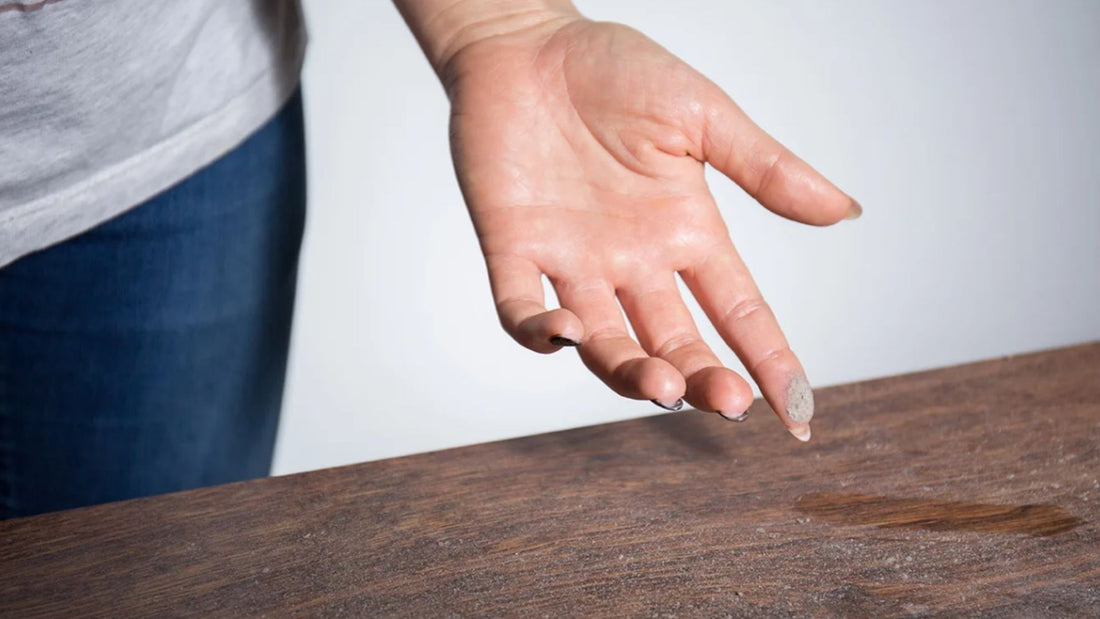
Can Mould on Wood Furniture be Hazardous?
Share
Your living areas are made more graceful with wood furniture. Wooden furniture is a popular choice for homeowners since it is made of natural materials and adds a cosy, homely feel to your space.
However, the most common issue we deal with in wood furniture is the growth of mould on its surface, which destroys the furniture’s appearance. It is also dangerous for your health, triggering nasal congestion, coughing, allergy conditions, and other respiratory disorders.
We have discussed the dangers of mould growth on wooden surfaces in today’s guide. We will also go over the many types of mould and demonstrate a safe method for removing mould from your furniture.
The Common Reasons for Mould Growth on Wood Furniture
The organic material that contains a porous surface is always susceptible to its growth. Wood is the top targeted surface for mould growth because that provides a favourable environment. Environment humidity and moisture can lead to the chances for mould growth due to various reasons, such as:
- High Humidity: Areas with high humidity can lead to excessively wet indoor air, which promotes the formation of mould on furniture surfaces.
- Inadequate Ventilation: Pieces of furniture kept in damp or poorly ventilated spaces, like basements or bathrooms, can be prime locations for the growth of mould.
- Condensation: This occurs when cool furniture surfaces come into touch with warm air. It causes condensation in the area, which promotes the mould growth.
- Water Damage: Furniture that has been exposed to spills, leaks, or flooding may retain moisture and encourage the growth of mould if it is not adequately dried.

Recognise the Types of Mould
The three main types of mould mentioned below are commonly known on wood surfaces.
Black Mould
Black Mould is perhaps the most dangerous to uncover, both for your health and the integrity of your furniture.
The most severe black mould is called Stachybotrys chartarum, and it can irritate skin and respiratory systems by emitting toxic fumes or mycotoxins. Exercise caution and wear protective clothing when removing mould from wood to avoid health risks.
White Mould
The least dangerous mould, white mould, indicates a lot of moisture and humidity in the space. Its powdery/stringy texture and white colour point to humidity issues. Although it poses no health risk, white Mould removal is essential. Ensure the room has sufficient ventilation and a clear outlet to stop the reproduction of mould.
Green Mould
Unaware to most, green mould is more dangerous than other types and is more common on wood. It’s a clue that there’s moisture accumulation on the surface, probably from poor ventilation and high humidity. Compared to black mould, green mould is more likely to result in health issues. You can clean all kinds of mould almost with the same method.
How to Get Rid of Mould on Wood Furniture?
Safety Precaution: Get the surrounding furniture ready for the removal of mould. Put on safety gear, such as a face mask, and cover the area to be cleaned with old sheets or plastic bags. Take precautions against mould spores.
Use Vacuum Cleaner: To eliminate mould, gently scrub the wood with a soft bristle brush and remove it quickly and effectively with a vacuum equipped with a HEPA filter.
Use Vinegar Solution: To remove extra stains, apply distilled white vinegar to the wood mould, let it remain for an hour, and then wipe it clean with water to get rid of the mould.
Rinse the Area with Hot Water: To stop mould from growing again, make sure the treated wood is thoroughly dry and well-ventilated. For enough ventilation, think about opening the windows or utilising a fan.
Please Note: You may need to hire expert cleaners to handle the problem if you’re worried about the severity of your black mould problem or if you have uncontrollably significant levels of white or green mould. They will receive training on eradicating mould from the impacted area and assist in keeping it from growing again.

Choosing the Correct Cleaning Solution
Depending on the type and size of the mould on the wood surface, different cleaning supplies and techniques are needed.
For Small Mould Surface: For minor mould problems that are discovered early on and before the mould has gotten far into the wood, homemade remedies in a spray bottle work well. When detected early, light mould on wood can be effectively treated and removed with a spray bottle filled with a solution of warm water and distilled white vinegar.
For Large Mould Surface: For more significant mould problems on wood, homemade remedies can still be helpful, but it’s essential to know precisely what kind of mould you have. Large spots of green or white mould on wood can be successfully removed using vodka, vinegar, or dishwashing solutions; just be careful to remove any remaining mould spores. Extensive cleaning is necessary to stop mould growth in the future since loose spores might cause regrowth.
For Severe Cleaning: The most dangerous kind of mould on wood is black mould, which needs to be removed with specialist mould removers. When utilising professional mould removers or other cleaning techniques, it is crucial to use the appropriate protective gear, such as rubber gloves and safety eyewear, to ensure safety.
Eliminating the Mould Using These Easy Steps
There are many ways to eliminate mould, and the few that are excessively used are mentioned below:
- Start by determining how much of the wood furniture has mould on it.
- To stop the spread of spores, move the furniture to a well-ventilated area—preferably outside.
- Gently remove any loose mould spores from the surface using a gentle brush or cloth.
- Use hydrogen peroxide or white vinegar and water to make a cleaning solution.
- Gently cleanse the afflicted areas with a clean cloth or sponge that has been dampened with the solution.
- Baking soda paste, made by combining baking soda and water, can be used as a natural abrasive cleanser for rigid mould.
- Using a fresh, moist towel, rinse the furniture to get rid of any leftovers.
- Let the furniture air dry thoroughly in the sun to help prevent the growth of mould.
- To bring back the finish on the furniture, think about using a wood cleaner or polish.
- Take care of any underlying moisture problems to stop mould from growing on the wood furniture in the future.
Final Discussion
Wooden furniture is the persistent challenge of mould growth, particularly in environments with high humidity and poor ventilation. The dangers of mould on wood surfaces, its common causes, and the types of mould to recognise.
We also guide practical steps for safely removing mould from wooden furniture, emphasising caution, proper cleaners, and thorough ventilation. Expert assistance may be necessary for severe cases. Maintaining a dry environment is crucial for preserving your wooden furnishings’ aesthetics and health.
For further information, please contact “Bed Trend”. We have every solution regarding best quality beds, mattresses and more. We also have home decoration-related accessories.
